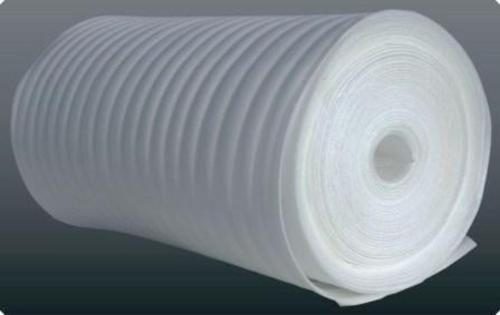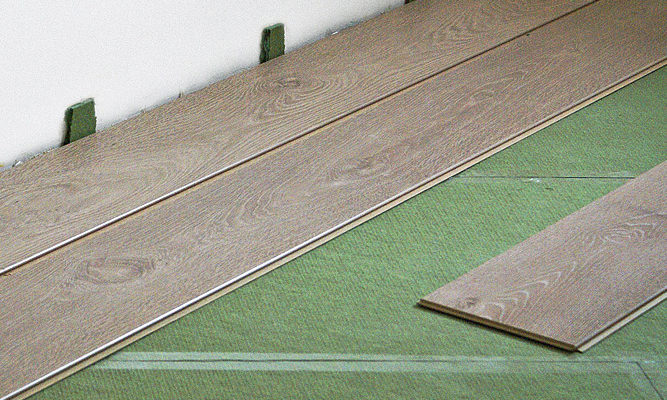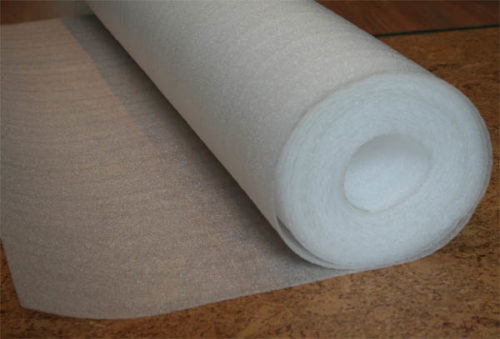A parquet board is one of the most popular filling materials that are used in the repair of apartments and private houses. In comparison with the natural parquet, the parquet board is much cheaper, which makes it more accessible to a wide range of consumers. At the same time, according to its aesthetic beauty, this material is practically not inferior to the parquet.
Content
Due to its form, which has a special locking system, laying the parquet board does not represent much difficulty even for those who have come together to do it for the first time. Mandatory material that is used when laying a parquet board is the substrate. Currently, several types of substrates are available on the market, which have a different structure and scope. To make the right choice in one direction or another, it is necessary to understand the difference in the types of substrates, the materials of which they are made and the features of their use. On how to choose a substrate for the parquet and put it with your own hands, let's tell me further.
Functional features of the substrate for parquet or parquet board
Contrary to the opinion of some specialists who consider the substrate a waste of money, its installation before laying parquet is mandatory. The service life of the parquet depends on its proper choice and styling, and the substrate is much cheaper than in a couple of years to transfer the silent coating. The substrate for a parquet or a parquet board carries several functions:
- Damper between rough floors and flooring. Thanks to the substrate, the back side of the parquet does not come into contact with the draft floor, which in most cases does not have a perfectly smooth surface. Due to such a seal, the board when walking does not make up additional sounds, and also does not grieve with small displacements.
- Additional heat and noise insulation. Almost all types of substrates, despite the fact that they are made from what material, they are perfectly retaining heat and block the passage of outsiders, which is very important in the conditions of an apartment building.
- Aligning surface. A dense substrate will perfectly hide small flaws of the floor surface.
- Waterproofing board. If there are problems with the humidity of the basement in the apartment, it usually applies to the first floor, the flooring of the parquet without a substrate is not recommended, because this reservoir can play the role of an additional layer of waterproofing, which is important for the state of the parquet. Otherwise, problems with fungus can be fatal for the board.
Varieties of substrates for parquet
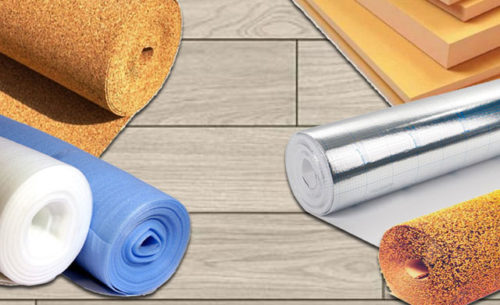
Currently, manufacturers of parquet substrates offer consumers a wide range of models made from various materials. From what material it is made, the operating properties of the substrate depend on.
Imagine to your attention Description Parquet substrates Next:
- Polyeneetylene substrates. This type of lining material is one of the most popular parquets in private houses and apartments. A distinctive feature of this substrate is its low price. At the same time, it successfully copes with the tasks put on it, namely, the correction of irregularities, additional noise and thermal insulation. The disadvantage of this type of substrate is a short life. After 10-12 years, it is simply scattered, which leads to the need to reboot the parquet again.
- Foil substrate. They are not a separate species, subspecies and others. A layer of foil is applied with the same success as polyethylene foam, and the pith of the substrate. Due to the presence of this layer, the characteristics of the material are improved by several times. This is especially true of thermal insulation, since the foil reflects infrared radiation and prevents the loss of heat in the floor. When combined with polyethylene foam, it significantly increases its service life.
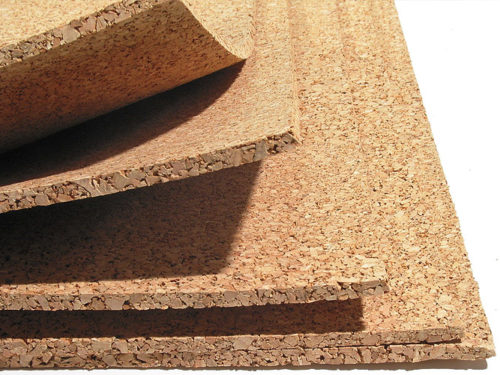
- Cork mats. Cork is a natural material, boasts of its environmental friendliness. It is very flexible and quickly takes the floor relief, filling with all its defects. Apply the plug can be practically any subfloor surfaces, be it wooden board or concrete screed. Cork is a very good body-and shumoizolyatorom and characterized by a great life.
- Bitumen-cork mat. Characterized by having a layer of bituminous resin. This is one of the best materials for waterproofing. She is an excellent blocking noise and vibration. However, the presence in the bitumen is causing restrictions in its use for the premises. Heating the resin contributes to the release into the air large amounts of formaldehyde, which is harmful to human health.
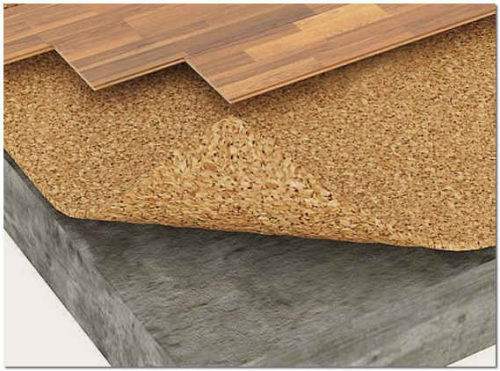
- Composite substrate. Distinguished by the presence of several layers of different materials. Due to this they are perfectly perform their functions. Typically, the base substrate is a polyester. He lets the moisture, however, is a great silencer. To absorb moisture there is a second layer. It consists of polymer beads, which resemble a foam balls. Due to the presence of empty space between them, there constantly circulates the air, which promotes drying of moisture. The upper layer of the substrate, typically speaking thick polyethylene film and (or) foil.
How to choose the substrate
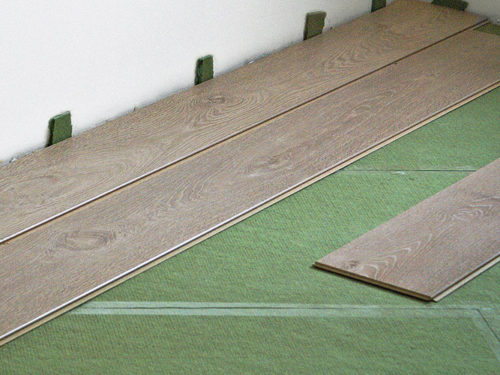
In addition to the material of construction of the substrate, it is necessary to pay attention to its technical characteristics:
- The thickness of the substrate for parquet. The most appropriate substrate thickness is 10 mm. The stronger its layers, the total thickness of them may be shorter. For example, for the minimum thickness of foil material may be from 7 mm, and most acceptable version stopper - 15-25 mm. The thicker the layer - is better, however, it is worth remembering that such support costs would be much higher.
- The ability to equalize the surface. Often, the parquet is not fitted on an ideally smooth surface, so one of the substrate functions is to align it to a normal state, so as not to spoil the parquet. In order to maximize the leveling of the surface, it is better to choose a softer substrate with a thickness of more than 10 mm.
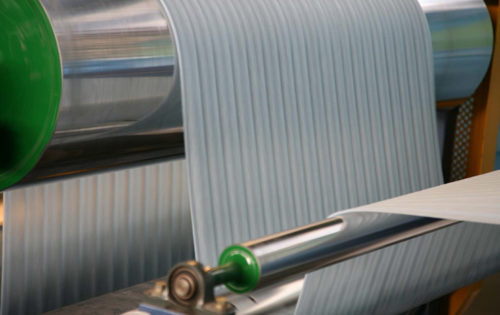
- Additional protection against moisture. This criterion is important for those who are going to lay the substrate on the floor, the basis of which is soil or clay. In this case, the concrete screed can pull moisture that will spoil the parquet. For such floors, it is necessary to buy a substrate with an additional layer of waterproofing or undermine the layer of polyethylene film under it.
- Form of material release. Almost all types of substrates are produced in the form of mats or in rolls. On the physico-mechanical properties of materials, the output form does not affect. Here you need to look at the configuration of the room, and select such a material so that it is convenient to work with it.
- Price. This is a fundamental parameter to select the substrate. For an apartment on the middle floor, with a smooth floor to buy a substrate with additional waterproofing and a thickness of 20 mm there is no point. Money for it will be paid considerable, and the effect of the tools spent will be zero. That is why additional qualities should be weighed and an additional cost. Not always what is more expensive - better.
Setting the substrate for a parquet with your own hands
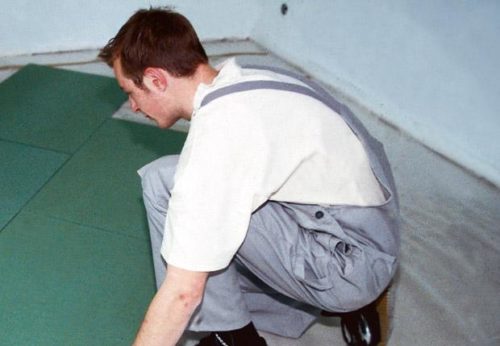
Flooring substrates under the parquet board - one of the most simple stages of laying a clean coating. Conditionally this work can be divided into 2 stages:
- Preparation of the foundation.
- Laying the substrate.
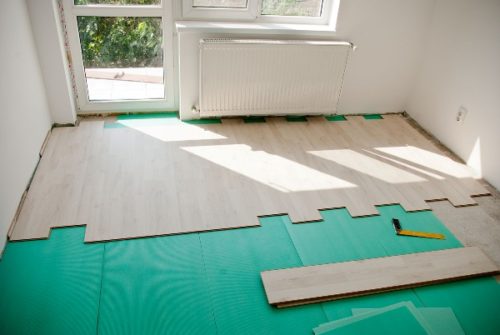
The procedure for installing the substrate is as follows:
- Preparation of the base before laying a substrate under a parquet or parquet board must be carried out at mandatory. Paul should be maximally aligned. If there are significant damage on it, the screed must be updated or fill. If you have chosel, you need to repair their repair. To do this, use a special plaster or cement-sandy solution.
- The choice of material depends on the area that needs repair. To start with the floor surface clean the remnants of dust and chunks of concrete dumps. Then, the surface coated with a primer layer. To do this, it is best to use a primer deep penetration based on PVA. Apply primer better roll with high pile. At the same time it will be better absorbed, and its consumption will be much less. Primer on the floor dries not more than a day, depending on the room temperature.
- After drying, the floor space allocated sealed with plaster and primed again.
- Then you can start laying the substrate. The web material is rolled out before laying on the surface of the floor, so that it disintegrated under its own weight and took the floor relief. With frosted material so it is not necessary to perform the procedure, it can be installed immediately.
- If wet floor indoors and the substrate does not have a waterproofing layer beneath it is necessary to put a plastic film. It fits last overlapping. Joints necessarily glued shut.
- When laying substrate must maintain the minimum clearances from the wall, it is necessary that the wicking material is not pulled from the walls. The strips or mats stacked polozhki butt which glued tape. Some artists do not, and be bound by gluing joints - a moot point. Excess substrate truncated wallpapering conventional knife.
- When laying the lining material is necessary to remember the fact that put him in 2 or more layers is impossible. This can accelerate mechanical wear material, the effect is much worse than when laying a single layer of the same thickness.
